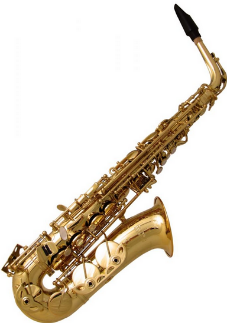- Home
- Music Tuition
- Instruments
- Woodwind
- Saxophone

- Who can play the saxophone? Is there a recommended age, or can size or teeth be an issue?
- If it is not suitable for everyone, what alternative instrument would you recommend and why?
- What qualities of the saxophone are special?
- Learning to play any instrument develops lots of new skills. What are the particular benefits of playing the saxophone?
- How are saxophones similar/different to other woodwind instruments?
- Are there any famous musicians or pieces associated with the saxophone?
Who can play the saxophone? Is there a recommended age, or can size or teeth be an issue?
Adult front teeth are needed. Suitable for KS2 or above (depending on height and hand span).
If it is not suitable for everyone, what alternative instrument would you recommend and why?
The clarinet or recorder. Recorders and clarinets are more affordable and suitable for younger/smaller players. The clarinet develops the same ‘embouchure’ (mouth technique/position) and is played using a single reed like the saxophone. All skills learnt on either recorder or clarinet would translate to the saxophone.
What qualities of the saxophone are special?
You can study a wide range of musical styles, from classical to pop, funk and jazz.
Saxophones come in different sizes with very different pitches, from the deep sound of the contrabass to the high sopranino saxophone. Most pupils start learning on the alto or tenor saxophone.
Learning to play any instrument develops lots of new skills. What are the particular benefits of playing the saxophone?
It is a cool instrument! Saxophones are not usually found in orchestras but are included in many ensembles and are key to the distinctive sound of many groups. They have a powerful brass-like sound combined with the mellow tones of a woodwind instrument.
How are saxophones similar/different to other woodwind instruments?
Most saxophones have a curved body like an upside down question mark. They are usually a yellow brass colour but unlike the brass family of instruments (e.g. trumpets) they are played by pressing keys and the sound is created by blowing down a mouthpiece with a reed that vibrates.
Are there any famous musicians or pieces associated with the saxophone?
The Pink Panther Theme, ‘Baker Street’ by Jerry Rafferty, ‘Bird’s Lament’ by Moondog and ‘Bolero’ by Ravel (adapted for the saxophone). Charlie Parker and Ed Fraedrich are famous saxophone players.


